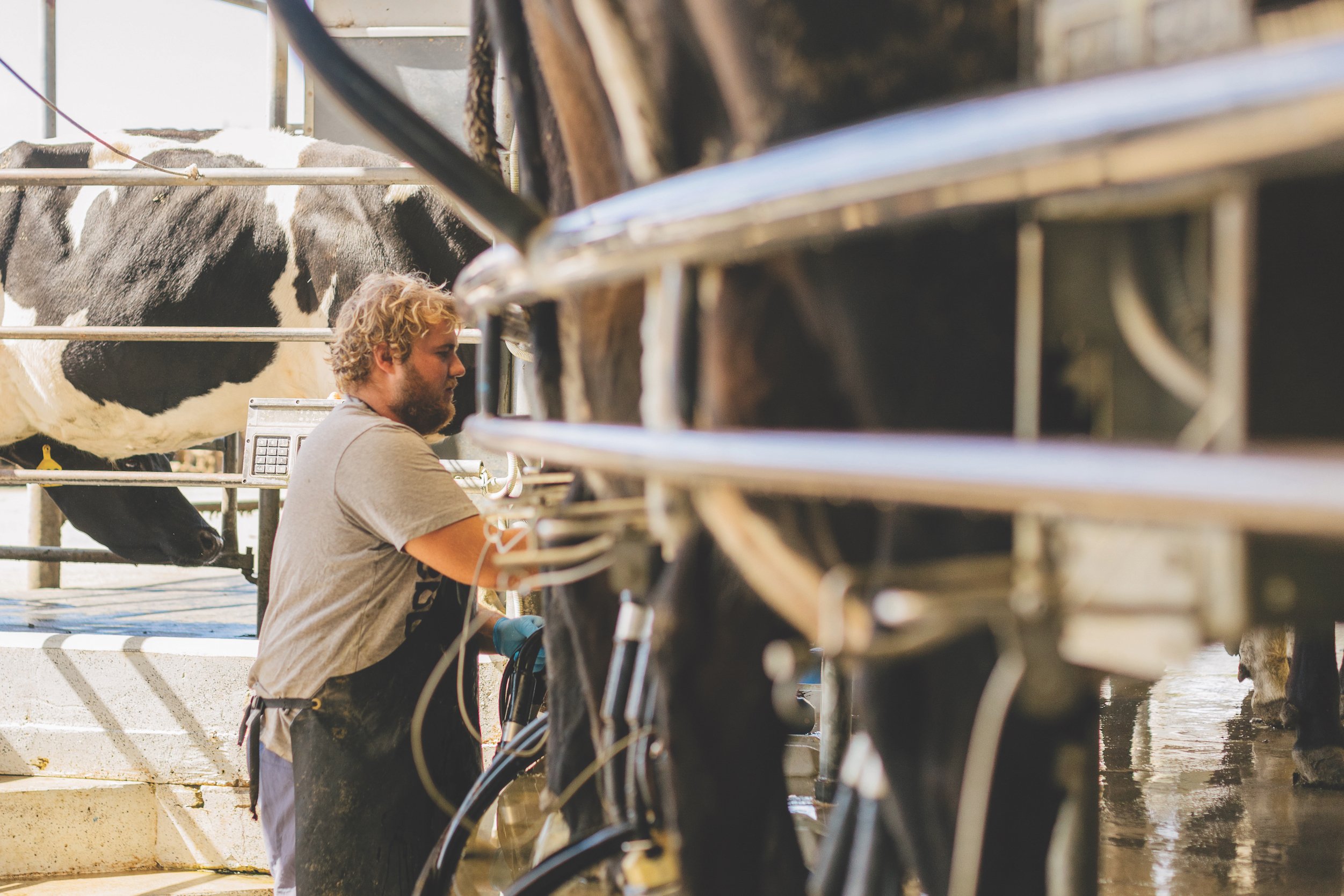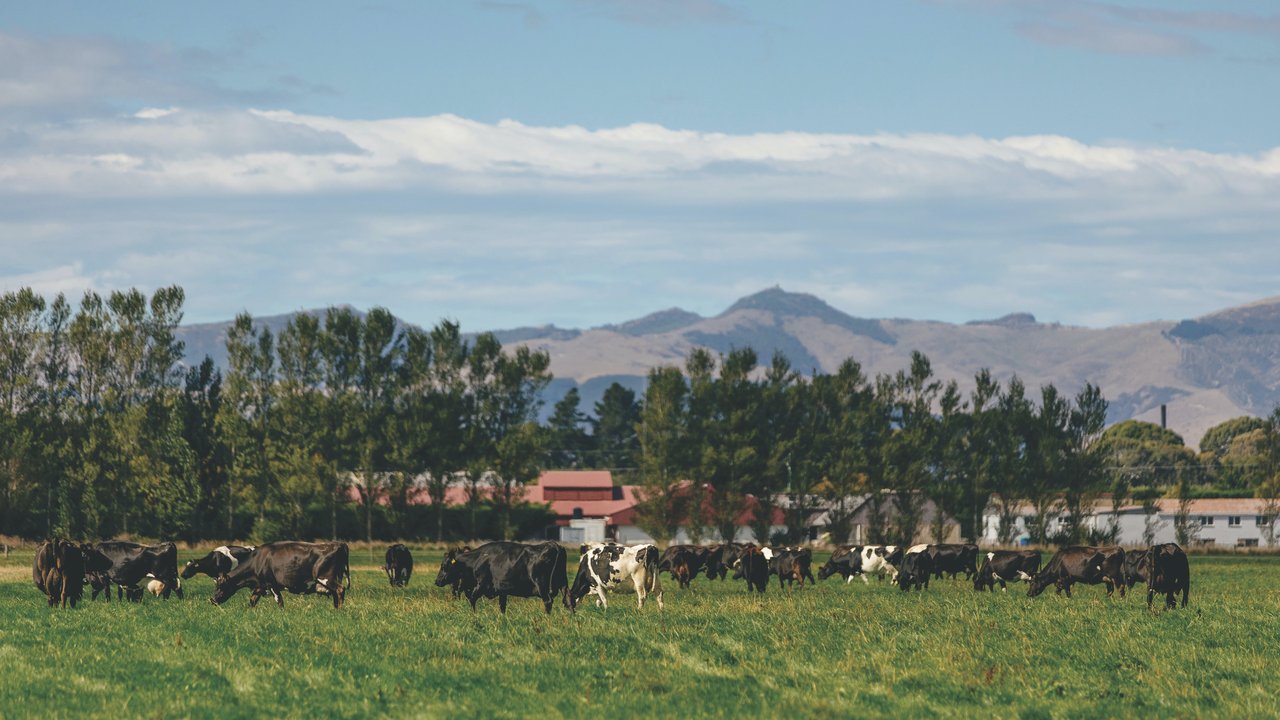“That’s good from both a business efficiency point of view and from an environmental point of view,” says Peter Hancox, Lincoln’s farm manager.
In 2010 the farm was milking 670 cows but today there are 560 cows on the milking platform. Aside from sharper farm management practices, Peter credits a more-targeted approach to both breeding and production worth for the good gains the farm has made.
Previously a big user of Premier Sires, the farm has in recent years adopted more nominated options, with a focus on making faster strides in genetic gain through use of latest, genomically-selected, young bulls.
With a drive to reduce its bobby calf output, the farm is now utilising liquid A2/A2, Sexed Semen, and short gestation Angus, with an overall strategy to breed toward an F10 animal that has an A2/A2 profile.

Peter Hancox, Lincoln University farm manager, checks out the young stock
Knowing who's who
While more targeted semen selection helps improve rates of genetic gain and efficiency on farm, another ‘cog-in-the-wheel’ is the application of GeneMark parentage testing, which contributes to the confidence in recorded ancestory.
The farm began parentage testing 10 years ago, and Peter says it has allowed for more-accurate decisions on:
i) which lines of calves would be best to rear as replacement stock, or;
ii) which cows would be best-mated for breeding purposes (as opposed to beef options), or;
iii) which cows should be lined up for sale or culls.
The benefits of whole herd testing have therefore gone well beyond easy identification of calves to dams during winter calving (potentially eliminating the labour intensive job of manually matching and recording animals in the paddock).

The average cow produces at least 100kg more milksolids than it did 10 years ago
A clear long-term vision
Peter reflects on 2010, when the Lincoln farm faced a number of business challenges it was keen to confront head-on.
The challenges included a parentage mis-match rate of about 30% on both its 2009-born and 2010-born calves.
Initial DNA testing also indicated its ‘top-160 keepers’ was worryingly inaccurate; 11 of the ‘keeper’ stock had taken a spot ahead of other young stock that showed more genetic worth (based on better parentage/ancestry results, together with its genetic make-up).
The farm wanted to address its animal identification issues, Peter says, along with better attention in exposing the true under-performing stock (i.e. incorrectly identified as high breeding worth animals due to mis-mothering).
Time for a fresh focus
Thanks to a combination of accurate management of stock, better repro, targeted genetics, short gestation Angus, with an overall strategy to breed toward an F10 animal that has an A2/A2 profile.
and GeneMark’s ongoing DNA parentage identification, the farm has today overcome those fundamental challenges of a decade ago, Peter says.
“If you’d said to me 10 years ago, when our cows were averaging 400kg milksolids (MS), that they could get to 520kgMS, I would’ve thought that would be quite a stretch. But I know those sorts of gains are quite achievable now.
”Without GeneMark, we wouldn’t have correctly identified and consistently kept the best genetics and made the gains we have... there’s little doubt there’s been impact, and there’s little doubt it’s a return on our investment.
“What we do know is that we’ve reduced cow numbers from 670 to 630, and then subsequently to 560, and we’re still doing the same production. “It’s intriguing to think where we might be in five years time – can we get to averaging 550kgMS a cow? ... will that be the new norm for us?”
Peter says if the Lincoln farm can continue working on its repro and mating management while nailing empty rate and six-week in-calf targets, there was still significant room for improvement.
He says it’s “quite conceivable” that in 10 years the farm could be milking 50 fewer cows while averaging 550kg-600kgMS per cow.





